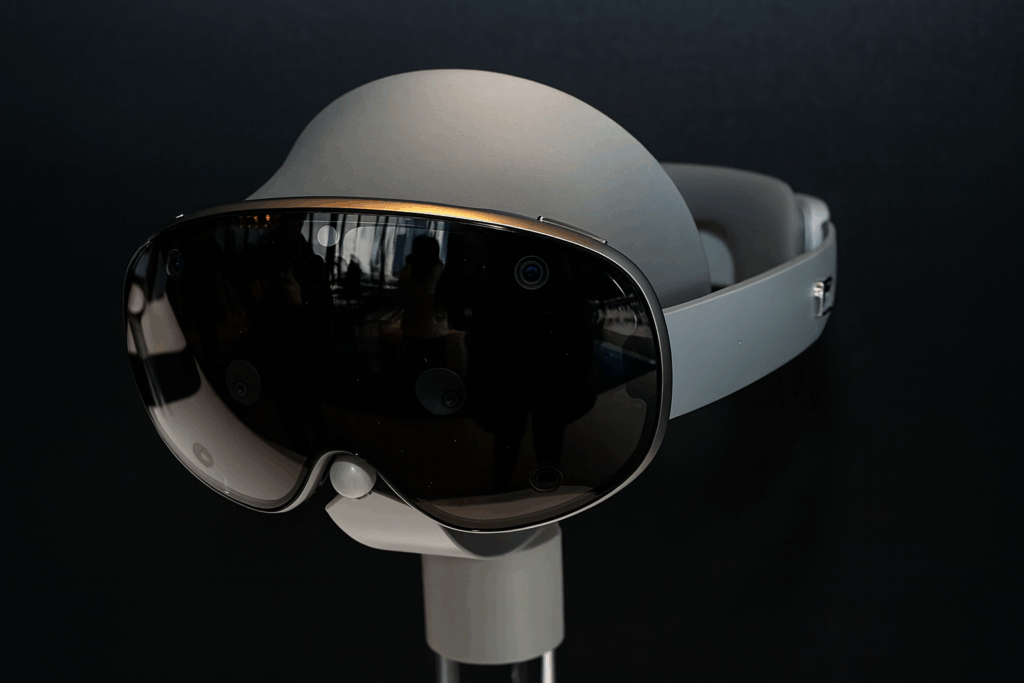With the official debut of the Galaxy XR, Samsung Electronics and Google LLC are signaling a renewed push into extended reality (XR). The new headset is built in partnership with Qualcomm Incorporated and powered by the new Android XR operating system. It aims to challenge the dominance of Meta Platforms and Apple Inc. in the smart-glasses and XR headset space. By licensing the platform across multiple form factors, the partners appear determined to turn the page on past misfires and carve out a new ecosystem.
At the heart of the venture is the Galaxy XR, launched at a U.S. price of $1,799 and available now in the U.S. and Korea. Its hardware resembles rival headset models and offers full-field coverage, pass-through cameras (which let users see their real-world surroundings while wearing the device), and hand- and eye-tracking (technology that detects user movements and gaze for interaction). However, Samsung and Google are selling software orchestration—the way their systems manage and integrate hardware and software features—as their main differentiator. As Samsung’s Mobile eXperience chief, Won-Joon Choi, stated, “Built on Android XR, Galaxy XR expands the vision for mobile AI into a new frontier of immersive and meaningful possibilities. It allows XR to move from concept to everyday reality.”
Choi also addressed the challenges of collaboration. “Initially, it was not easy at all,” he told Yahoo Finance, referencing the coordination among Samsung, Google, and Qualcomm. “I know people may ask, ‘Why are you guys entering this space … while the other companies are not doing well?’ We believe the answer is that when you combine this XR with [Gemini’s] multimodal AI, we kind of saw the synergy between the two.” Google’s Gemini is deeply embedded in the Android XR stack. Its inclusion enables the device to understand voice, vision, and gesture in concert, assisting tasks in real time.
The timing of this launch is intentional. Global shipments of traditional virtual-reality (VR) headsets continue to decline, falling 12% in 2024 according to industry tracker Counterpoint Research. Samsung and Google are focusing on the faster-growing smart-glasses and AR segment. Counterpoint reports that AR or “smart-glasses” shipments grew by more than 200% year over year in 2024 and could surge further. That suggests the market they’re chasing is less saturated but also less proven.
From a product perspective, Galaxy XR is more than a mere headset. Samsung bills it as the first in a roadmap that will include wired smart glasses, wireless glasses, and ultimately full AI glasses, all using the Android XR platform. “There’s a whole journey ahead of us in terms of other devices and form factors,” said Google’s AR/XR vice-president Shahram Izadi. The platform’s openness—built on OpenXR standards and compatible with existing Android apps—is intended to lower the barrier for developers and accelerate the ecosystem.
The challenge, of course, lies in execution and market acceptance. While the hardware specifications are competitive, observers caution that the traditional barriers remain: price, comfort, content, and day-to-day utility. A review noted that the headset is “significantly lighter” than rivals, but still requires a separate tethered battery pack and produces some heat after short periods in use. The review added, “None of this is particularly new in the realm of mixed reality … it’s unclear whether Samsung and Google’s solution will fare much better, even if it’s more accessible.”
Nevertheless, Samsung and Google are launching with an attractive bundle of incentives. Early Galaxy XR buyers receive an “Explorer Pack” that includes 12 months of Google AI Pro, YouTube Premium, and more. This content shows they are positioning the device not as a solitary gadget. Instead, it is a portal into a broader ecosystem of immersive work, play, and daily tasks.
Meta has held the lion’s share of the VR headset market, reaching 77% in 2024, and maintains a strong position. Its dominance is built more on legacy VR than the evolving AR/AI wave. Samsung and Google appear to be aiming for that next wave. According to Counterpoint, AR smart-glasses shipments are projected to grow 42% year over year in 2025, even as VR growth stagnates.
In summary, the Galaxy XR represents a step in Samsung and Google’s evolving immersive computing strategy. By positioning “multimodal AI” at the center, the companies aim to position headsets as a viable category within personal computing, from experimental devices to a viable category within personal computing. Success will likely be defined not by one product, but by the supporting architecture and ecosystem. At launch, a key question emerges for the sector: Can affordable hardware and an open XR platform catalyze developer engagement and mainstream adoption?


